Best Mattresses for the Money – Buying Guide and Top Models
For most households buying a mattress is a serious financial investment, and if you want to get the best mattress that fits your budget, our buying guide can help.
For most households buying a mattress is a serious financial investment, and if you want to get the best mattress that fits your budget, our buying guide can help.
Deciding to invest in a new mattress is not an easy decision, especially considering that the cost for a Queen-size mattress can range from $1000 to $2000. While it’s possible to find mattresses priced as low as $150, their quality and performance often do not compare to more expensive models. For most households, this purchase is a considerable financial investment. Although many mattresses come with sleep trials and warranties, the hassle of returning a mattress and getting your money back is something you’d likely prefer to avoid. When comparing mattresses based on their prices, it’s crucial to take into account several aspects to ensure you make a well-informed decision, such as the mattress’s longevity, its ability to relieve pressure, isolate motion and noise, and regulate temperature.
To ensure you choose the right mattress for the below-average price, we have created a short guide which contains useful strategies for first-time mattress buyers. In this list, we have selected best-value mattresses available in three different price ranges – less than $600, $1000 and $1500. This price refers exclusively to Queen-size models or smaller. To create this list, we have consulted five sleep experts, considered more than 150 mattresses and spent 120 hours researching.
HIGHLIGHTS: Medium firmness, excellent edge support, sleeps cool, 100-night sleep trial and a 10-year warranty
Quality beds prices less than $600 are pretty much rare. However, the Allswell innerspring bed is a notable exception. This mattress is affordable to every budget and has all the qualities its pricier competitors have to offer, such as quality support, excellent responsiveness, and temperature neutrality.
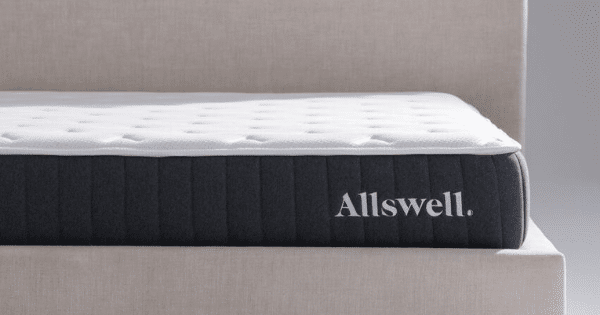
When it comes to conforming and pressure relief, this model really stands out. The mattress’s comfort layer is made from polyfoam and soft gel memory foam. You may think that this mattress is noisy, but unlike most innerspring models, it produces significantly less noise than its pricier competitors. The Allswell has excellent airflow that ensures the sleeper always sleeps cool. Lastly, the product is backed up with a 100-night sleep trial and a 10-year warranty, which are both significantly longer than average for mattresses in that price range.
Recommended for:
HIGHLIGHTS: Medium firmness, excellent conforming and pressure relief, quality motion isolation, 100-night sleep trial, and a 10-year warranty
The Tuft & Needle mattress is low priced for its qualities. It’s an all-polyfoam bed with three comfort layers, and medium firm feel. The surface is excellent for average weight sleepers and those who prefer to sleep on their back or side. High-density foam base ensures close conforming and higher quality edge support that standard all-foam models.
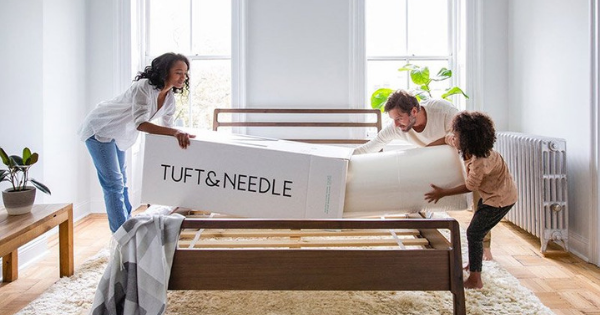
When it comes to motion isolation, the mattress doesn’t make any noise when bearing weight and its perfect for couples. Temperature neutrality is also better than average and the top foam layers infused with cooling gel and charcoal will definitely help you sleep cool through most of the night.
Recommended for:
HIGHLIGHTS: Flippable with dual firmness, excellent motion isolation, close contouring and pressure relief, 120-night sleep trial and a lifetime warranty
The Layla mattress stands out for several reasons. One of the most notable reasons is that Layla is a flappable mattress with dual firmness. One side is medium soft, while the other is considered firm. Due to its unique design and dual firmness, the model is suitable for all weight groups and sleepers with various firmness preferences. The mattress is very light, so the users can easily flip it when needed.
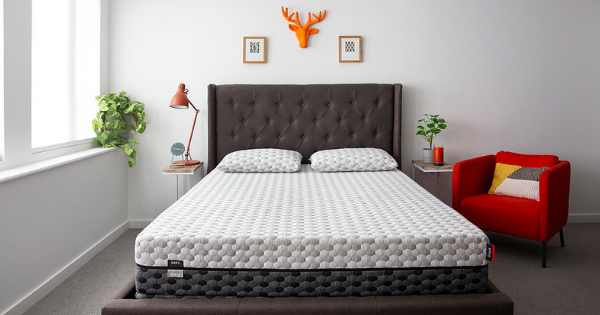
The model contains copper-infused memory foam which provides excellent conforming and pressure relief. It’s particularly beneficial to side sleepers because it ensures their spine is properly aligned during the entire night. The copper-infused memory foam also aids sleepers with poor circulation. Lastly, the softer side has another layer of convoluted polyfoam for additional cushioning, which helps maintain an even surface on both sides of the bed.
Recommended for:
HIGHLIGHTS: Medium firmness, excellent contouring, and pressure relief, sleeps cool, 1-year sleep trial and a lifetime warranty
The Nectar Sleep mattress is thicker than average, but its multiple layers of memory foam ensure a comfortable and pressure relieving experience for most sleepers. Compared to other memory foam beds, Nectar is priced significantly lower.
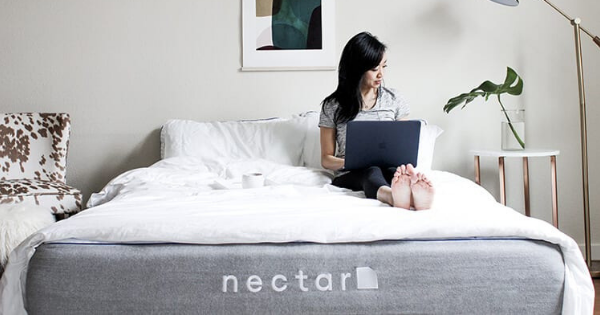
The comfort system of the bed consists of gel memory foam and standard memory foam. It is most suitable for sleepers of average weight. The dual-layer support core reinforces the mattress and ensures the sleepers don’t sink, even if they prefer to sleep closer to the edges. Additionally, Nectar comes with a cotton-lyocell cover for cool sleep. As its price and qualities aren’t enough, the Nectar mattress comes with one of the longest sleep trials and warranties available anywhere in the world.
Recommended for:
HIGHLIGHTS: Multiple firmness options, Excellent conforming and motion isolation, 120-night sleep trial and 15-year warranty, free White Glove delivery
The Loom & Leaf by Saatva offers better support, pressure relief, and temperature neutrality than many of its higher-priced competitors. The Loom & Leaf consists of standard memory foam comfort layers and gel memory foam which apart from providing close contouring and excellent pressure relief, also ensure the sleeper stays cool during the entire night.
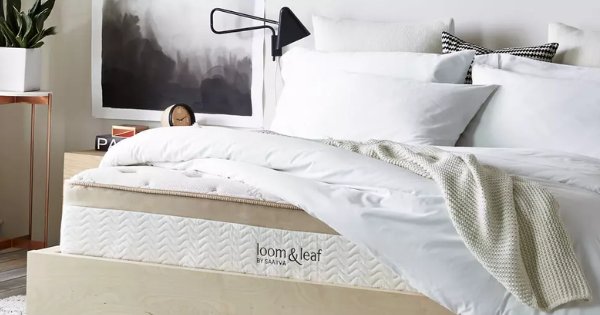
Since the model comes with two firmness options, it is suitable for most sleepers regardless of their weight and sleep position. The thick support core made of high-density polyfoam provides quality support while the thermogel infusion in the top layer, along with the breathable organic cotton cover ensures exceptional temperature neutrality and cool sleep.
Recommended for:
HIGHLIGHTS: Medium firmness, excellent conforming and pressure relief, quality motions isolation, 1-year sleep trial, and a lifetime warranty
Hybrid mattresses satisfy the needs of most sleepers because of their good balance in terms of contouring, support, and temperature neutrality. Hybrid models are mostly on the pricier side, but not the DreamCloud. This model consists of three memory foam layers and one latex transitional layer for additional support. The bed is a medium firm which is ideal if you are looking for close contouring and quality pressure relief.
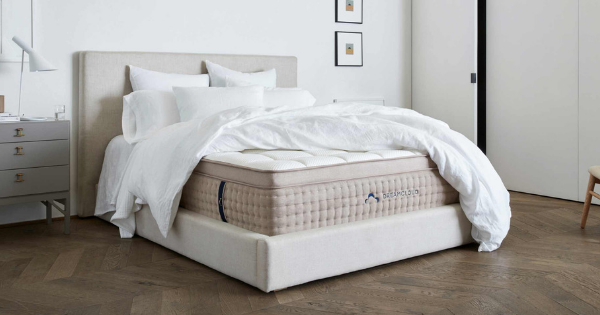
The mattress has a pocketed coil support core which ensures exceptional edge support and helps to maintain an even surface. Lastly, due to the strong airflow in the support core, the model is ideal for hot sleepers. Lastly, it comes with a significantly longer than average sleep trial and a customer satisfaction guarantee.
Recommended for:
As mentioned in the beginning, for most buyers, buying a new mattress is usually a significant financial investment. Quality mattress sold today are priced between $800 and $1,500, but high-end models may cost up to $5000 or even more. However, this doesn’t mean that you can’t get a high-quality and durable mattress at an affordable price. Let’s take a look at some of the most important considerations you should keep in mind when shopping for a new bed, as well as expected costs for different types.
One of the most crucial mattress construction and performance factors you should keep in mind are firmness, support, conforming, durability, edge support, motion isolation, temperature neutrality, responsiveness, and noise isolation. Let’s take a closer look at each of these factors.
Firmness: Firmness refers to how soft or firm the mattress feels to a sleeper. Some sleepers prefer sleeping on more rigid surfaces, while other prefer softer mattresses. In case you struggle with oscillating firmness preferences, you can opt for a flippable mattress with dual firmness options.
Support: Proper support is essential for preventing various pains and aches, especially when it comes to back pain, and hip pain. The level of support a mattress has depends on its support core – the components located beneath the comfort layer. Sleeping on a supportive bed is also essential for keeping your spine properly aligned during the night.
Conforming/Pressure Relief: Memory foam and latex beds are known for their exceptional contouring abilities. Quality conforming is important to alleviate pressure in the spine and other joints. Innerspring mattresses don’t conform as closely as other mattress types. If you struggle with pressure or pain, you must get a close-conforming mattress.
Durability: An average mattress must perform at least seven years optimally. Innersprings and memory foam models may deteriorate faster than other mattress types. Latex models and airbeds perform for eight years or longer if properly maintained.
Edge Support: Innersprings and hybrids tend to sag around the edges; therefore, most of them are reinforced with high-density polyfoam for extra support. Mattresses made from foam or latex are rarely reinforced, and their edge support is not particularly strong.
Motion Isolation: Foam and latex mattresses absorb movement making it great for couples or people generally sensitive to movement. Innersprings and hybrids, absorb and isolate motion significantly less.
Temperature Neutrality: Memory foam beds tend to trap heat which may be a problem for those who generally sleep hot. Innerspring mattresses usually sleep much cooler.
Responsiveness: Innerspring and hybrid models are bouncier and great for sex. Memory foam and latex mattresses respond slower, causing a sinking sensation that makes the couple feel like they are fighting the mattress.
Noise: Innersprings and hybrids are noisy due to their metal parts. Memory foam and latex mattresses are almost entirely silent when bearing weight.
Apart from these considerations, your body type, weight and sleep preference may help you determine which mattress is the best for you.
The price-point of a mattress is generally linked to the mattress type. Innersprings and memory foam types are more affordable than latex mattresses, hybrid varieties, or airbed options.
Innerspring mattresses – have steel springs in their support core, and one to two layers of polyfoam in the comfort layer. Four types of coils are used in today’s innersprings – Bonnell coils, offset coils, continuous wire coils, and pocketed coils. The thicker the gauge, the longer the overall lifespan of the mattress. The price depends on the type of coils in the support core. Continuous wire coils and Bonnell coils are found in more affordable models, while pocketed and offset coils are found in high-end and more expensive models.
Memory foam mattresses – are a popular mattress choice in recent years among consumers all over the world. Memory foam models are very comfortable, conforms closely to the sleeper’s body and help achieve ideal spinal alignment, and pressure relief. The comfort layer must include one layer of standard or specialty memory foam, and may additionally include gel memory foam, polyfoam or copper-infused memory foam. The support core is made from high-density polyfoam. Foam density is definitely a cost factor with high-density memory foam being the priciest option.
Latex mattresses – can be made from natural latex or synthetic latex, which is made from petrochemicals. Latex mattresses are excellent for targeted pressure relief, making it similar to memory foam. These models are considered the most durable mattresses on the market, with an average lifespan of eight years. Price depends on the type of latex used to construct the bed. Natural latex is more expensive than synthetic latex, and when it comes to specific kinds of latex, Talalay is costlier than Dunlop latex.
Hybrids – consist of at least two layers of latex and/or memory foam in the comfort system and a coil-based support core usually pocketed coils. Many sleepers consider hybrids combine “the best of” the innersprings and foam or latex models. When it comes to price, models with multiple memory foam and/or latex layers are more expensive, as well as those that have a pillow top. Pillow tops are not always recommended because also associated with shorter lifespans and sleeping hot.
Airbeds – have individual air chambers in the support core. Most come with adjustable controls that allow the user to adjust the firmness of the bed. These models are rare and typically expensive, but they last at least eight years if properly maintained. The support core is made from at least two air chambers, and the comfort layer contains at least one layer of polyfoam, memory foam or latex. When it comes to the price, models with remote or smart-app controls are more expensive than those with manual controls. The number of air chambers in the support core also affects the price because a higher number of individual chambers provide better comfort and pressure relief.
A wannabe journalist who somehow ended up as an art historian. She is a gamer, a coffee addict and a sleep aficionado. When she is not researching about sleep and finding out new ways to fight off the insomnia beast, she's spending time with her friends, gaming or visiting local museums.